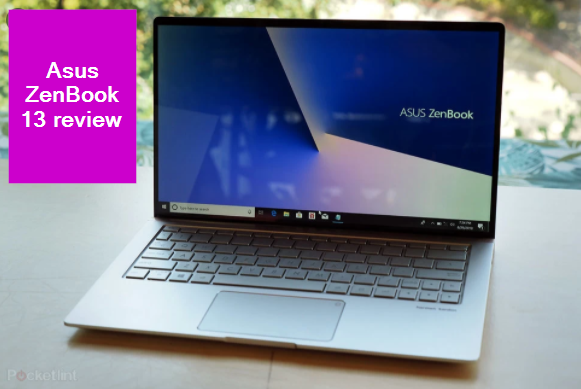Asus ZenBook 13 review: The complete ultrabook?
The Zenbook 13 features a clean design and is one of the thinnest laptops around in the market right now. It also offers powerful performance. Read on to know if it’s the laptop for you.
sus has been quite busy over the last few weeks. The company recently launched a number of new laptops in the country, one of which is the Zenbook 13 (UX325) — a 13-inch display clad model which also brings with itself the promise of high performance and extreme portability because of its lightweight nature.
The Zenbook 13 features a clean design and is one of the thinnest laptops around in the market right now. However what makes this a very good choice is the fact that it also brings powerful performance and long-lasting battery life, inside a package that’s ultra-portable and premium to look at. Starting at Rs 79,990, it is also not the most expensive, although the unit sent to us costs Rs 99,990.
We’ve had the laptop with us for a few days now. Here’s what we think about it.
[amazon box=”B07MLVQDF2″ “small”]

Asus ZenBook 13: Design and build
One of the standout features of the Asus Zenbook 13 is its design and build. The laptop’s body has been built out of diamond-cut aluminum alloy, which gives the Zenbook 13 a rather premium look. The ZenBook 13 and 14 weighs merely 1.11 kg and it also quite thin at less than 14 mm, which affords the laptop a sleek, ultra-portable form factor.
At the back, there’s a nice little circular textured pattern going on, which not only improves the grip of the device but also acts as a link with the previous generation Asus laptops. However, for those who have spent some time with the previous generation Asus Zenbook 13 model, it will be evident that this is an evolution in terms of design, as the design on the new model is different from the previous one.
Another interesting thing to note is that Asus hasn’t given up on connectivity or features to keep the design slim. This is because, despite the slim form factor, the Asus Zenbook 13 still manages to feature a host of ports. To Asus’ credit, it has managed to fit in two Thunderbolt 3 USB-C ports, a standard HDMI 2.0 port, a USB 3.2 Gen 1 Type-A port, and a microSD card reader.
[amazon box=”B07MLVQDF2″ “small”]
The laptop also features Asus’ popular ErgoLift hinge design that improves thermals by increasing airflow when the device is in use. This is done by elevating the base of the laptop when the display is opened, thereby improving airflow and also sound quality from the bottom-firing speakers.

Asus ZenBook 13: Display and keyboard
Talking about the display, the Asus Zenbook 13 features a 13.3-inch panel with very little in terms of bezels surrounding it. In fact, at 2.5mm the bezels around the panel are one of the slimmest on any device in the segment. This affords the laptop a 90% screen-to-body ratio, which not only helps keep the form factor in check but also improves the experience of playing games and watching movies, videos on the device.
The display in itself is also quite good as it offers very good viewing angles and also a maximum brightness of 300nits. The screen also offers good colour reproduction as it promises 100 percent sRGB spectrum coverage. The only real qualm we have of it is that the panel is Full HD and not 1440p or higher in nature. But to be honest, considering that this isn’t a gaming laptop by definition, the lack of a higher resolution display shouldn’t be too much of an issue for users.
Moving on to the keyboard, the ZenBook 13 features an edge-to-edge design which gives it enough real-estate to space out keys and offers good key travel and feedback. As we found out during our time with the laptop, the Asus Zenbook 13 is quite convenient to work on for long hours, and that’s not only because of its lightweight nature or compact form factor but also because of its ergonomically designed keyboard that’s a joy to use.
[amazon box=”B07MLVQDF2″ “small”]
The same is true for the trackpad, which brings with itself some fancy tricks. This is a hybrid solution which not only acts as a trackpad, and integrates the left and the right mouse buttons, but also doubles up as a physical numeric keypad at the touch of a button on the trackpad itself.
This can be done by activating the numeric pad by activating a touch-enabled button on the top right-hand corner of the pad. Similarly, the left top corner of the pad houses another button which can transform the trackpad into a calculator with touch-enabled buttons.

Asus ZenBook 13: Performance and battery
Under the hood, the ZenBook 13 brings a lot of power with Intel’s latest 10th Gen Ice Lake processors that are built using a 10nm fabrication node. Our review model is powered by an Intel Core i7-1065G7 CPU and Intel’s Iris Plus Graphics, which does a good enough job if you plan to use the laptop for playing basic games and editing.
To Asus’ credit, it has paired this powerful configuration with 16GB of DDR4 RAM and a 1TB of NVMe SSD storage running over a PCIe 3.0 lane. This helps the laptop handle pretty much anything and everything you throw at it. While benchmarks may reveal it to be not the most powerful laptop in the market, but for most applications and programs of daily use, the Zenbook 13 should have enough power to help make it stand out from the crowd.
From multitasking to light gaming, and even playing titles such as Fifa 20 on medium graphics at 1080p should not pose a problem here. The laptop handles all this and more with perfect ease. However, it would be prudent to note that the Zenbook 13 is not a gaming laptop, and as such, if it’s used to play demanding AAA titles such as Metro Exodus or Battlefield 5, then don’t expect it to impress. This is primarily because at this stage the limitations of Intel’s Iris Plus Graphics will start to show itself.
But where the Asus ZenBook 13 could disappoint a little in performance, it makes up for it in battery life. This is because Asus’ laptop is one of the strongest performers when it comes to battery life. The laptop packs a 67Wh battery, which as per Asus’ claims is good enough to last almost a day on a single charge. In actual use, the laptop does last over 10-12 hours at an average, which is still very good. But even when you do run out of charge, the laptop can be topped up real quick using the 65W Type-C adapter that Asus bundles with the ZenBook 13. Using this adapter, the laptop can be charged from 0-60 per cent in a little less than an hour.
Asus ZenBook 13: Should you buy it?
Starting at Rs 79,990, Asus’ ZenBook 13 is a competitively priced laptop that offers a good mix of power, performance, and sleek looks. At 1.1kg, it is also one of the lightest ultrabooks around, making it a very good option for work and productivity needs.
[amazon box=”B07MLVQDF2″ “small”]
Because of its premium design, the compact form factor, lightweight nature, and its big battery, the Asus ZenBook 13 is definitely a serious competitor to Dell’s XPS range of laptops, and can even give the MacBook Air a good run for its money. Its only drawback is that it can’t also double up as a gaming laptop after work hours. For that, Asus has the similarly priced Zephyrus G14. For everything else, there’s no reason why the ZenBook 13 can’t be your next laptop.




